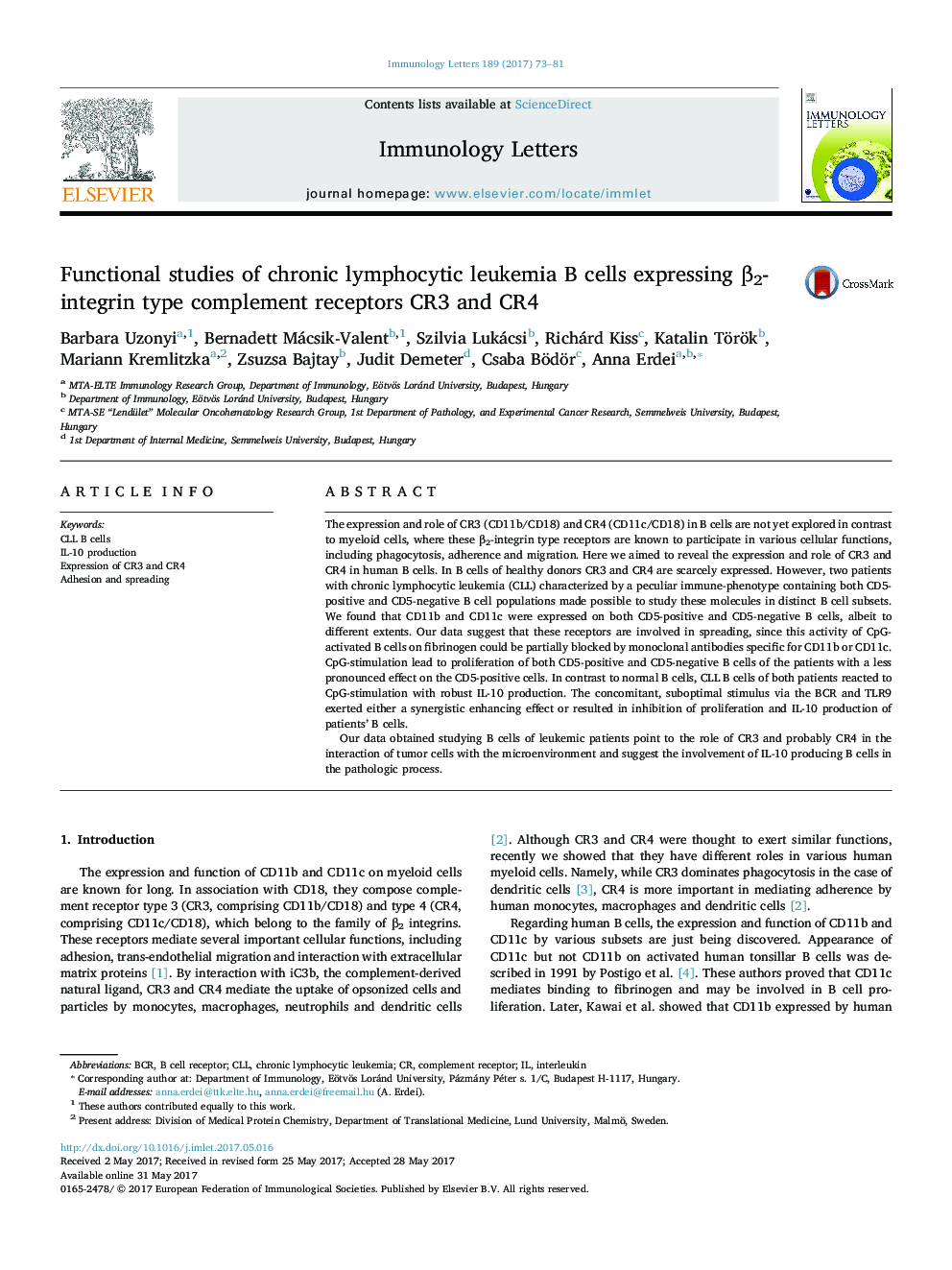| کد مقاله | کد نشریه | سال انتشار | مقاله انگلیسی | نسخه تمام متن |
|---|---|---|---|---|
| 5666669 | 1591537 | 2017 | 9 صفحه PDF | دانلود رایگان |

- Complement receptors CR3 and CR4 are expressed in B cells of patients with CLL characterized by a phenotype containing both CD5+ and CD5-B cells.
- These receptors are involved in spreading, since this activity could be partially blocked by monoclonal antibodies specific for CD11b or CD11c.
- CpG-stimulation lead to proliferation of both CD5-positive and CD5-negative B cells of the.
- CLL B cells of both patients reacted to CpG-stimulation with robust IL-10 production.
- These data point to the role of CR3 and probably CR4 in the interaction of tumor cells with the microenvironment.
The expression and role of CR3 (CD11b/CD18) and CR4 (CD11c/CD18) in B cells are not yet explored in contrast to myeloid cells, where these β2-integrin type receptors are known to participate in various cellular functions, including phagocytosis, adherence and migration. Here we aimed to reveal the expression and role of CR3 and CR4 in human B cells. In B cells of healthy donors CR3 and CR4 are scarcely expressed. However, two patients with chronic lymphocytic leukemia (CLL) characterized by a peculiar immune-phenotype containing both CD5-positive and CD5-negative B cell populations made possible to study these molecules in distinct B cell subsets. We found that CD11b and CD11c were expressed on both CD5-positive and CD5-negative B cells, albeit to different extents. Our data suggest that these receptors are involved in spreading, since this activity of CpG-activated B cells on fibrinogen could be partially blocked by monoclonal antibodies specific for CD11b or CD11c. CpG-stimulation lead to proliferation of both CD5-positive and CD5-negative B cells of the patients with a less pronounced effect on the CD5-positive cells. In contrast to normal B cells, CLL B cells of both patients reacted to CpG-stimulation with robust IL-10 production. The concomitant, suboptimal stimulus via the BCR and TLR9 exerted either a synergistic enhancing effect or resulted in inhibition of proliferation and IL-10 production of patients' B cells.Our data obtained studying B cells of leukemic patients point to the role of CR3 and probably CR4 in the interaction of tumor cells with the microenvironment and suggest the involvement of IL-10 producing B cells in the pathologic process.
Journal: Immunology Letters - Volume 189, September 2017, Pages 73-81